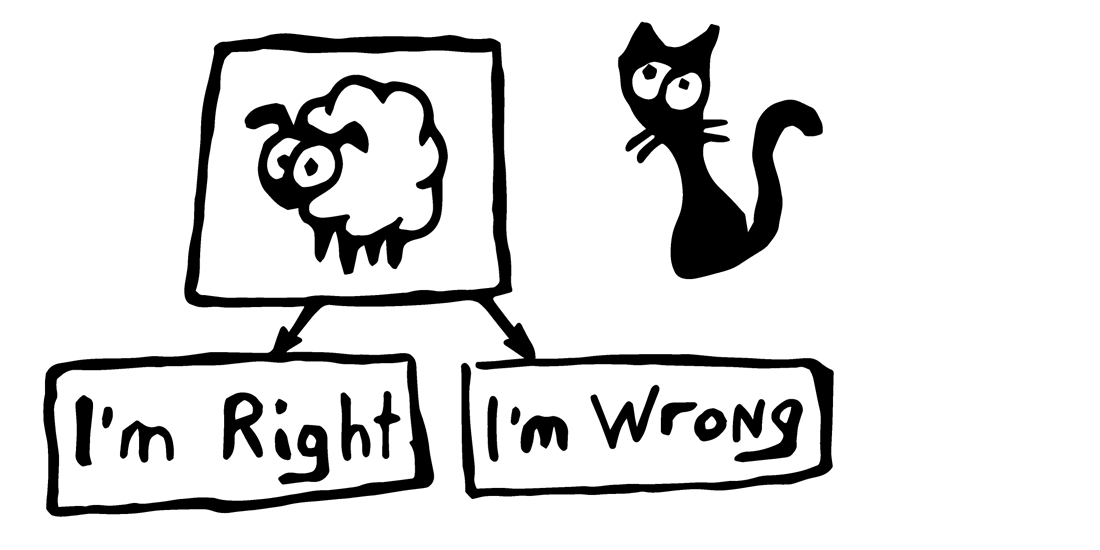Self-refutation method and the coming panda in making ambiguous decisions
Some questions do not have an exact solution, but still require evidence to answer correctly. For example, this question:
The question itself is not complicated, sometimes even obvious. But it is necessary to formulate the correct answer when this is required by the board of directors or your own doubts. In trying to prove your intuitive solution, difficulties may arise.
In business disputes, myself and my opponents more often instinctively prove their case than accept the arguments of the interlocutor. Therefore, logical arguments do not always help to make a decision. And even more so, in 99% of cases, all disputants are right. You can get a fan from the negotiation process, but I personally feel sorry for spending too much time.
To reduce the time, one can prove with the same persistence and zeal that I was mistaken. The bonus is that finding a mistake is much easier than proving its absence.
Giving the puzzle at least five minutes of time, you can laugh a little and stretch your brain. And as a maximum, find a huge omission in your calculations and correct the error in time.
When you don’t want to answer a question with logic, you can pass the test on an emotional level. Grab your head and ask yourself as sincerely as possible: “Well, why ?! Why am I so wrong with this sheep ?! ”
The answer is not important either.
But if, in spite of all efforts, doubts remain (you, or the board of directors), congratulations - a panda has come to you.
She is all so inadequate and tells you inappropriate things. Perhaps contrary to the logic of the project and the business as a whole. Perhaps related to your personal complexes and preferences. Perhaps the panda is just dancing.
If in doubt, dance with the panda and do as she says. And then there will be no doubt, it’s logical!
Which of these animals to choose as a symbol of greeting cards? Or, to give solidity: Which of these two logos will bring success to a multinational corporation with a turnover of 3 billion euros?
The question itself is not complicated, sometimes even obvious. But it is necessary to formulate the correct answer when this is required by the board of directors or your own doubts. In trying to prove your intuitive solution, difficulties may arise.
Prove that you were wrong
This is a simple and effective way to prove why the obvious (for you) answer will be the right solution (for everyone).
The year of the sheep is approaching and on the greeting card the sheep will be magnificent! It’s logical! (or not)
In business disputes, myself and my opponents more often instinctively prove their case than accept the arguments of the interlocutor. Therefore, logical arguments do not always help to make a decision. And even more so, in 99% of cases, all disputants are right. You can get a fan from the negotiation process, but I personally feel sorry for spending too much time.
To reduce the time, one can prove with the same persistence and zeal that I was mistaken. The bonus is that finding a mistake is much easier than proving its absence.
The simplest test for finding errors
Key test questions: Why am I wrong? What now? And an effective method for the coming panda (actually PANDAN, but the panda is funnier).
Why am I wrong?
I really love this question! It turns into a beautiful puzzle from the series "Under What Conditions, Obvious X is not True." In the case of animals, it can be assumed that the recipients of postcards will think that they were called sheep and offended (I saw this a couple of times with my own eyes). But that is not my problem.Giving the puzzle at least five minutes of time, you can laugh a little and stretch your brain. And as a maximum, find a huge omission in your calculations and correct the error in time.
When you don’t want to answer a question with logic, you can pass the test on an emotional level. Grab your head and ask yourself as sincerely as possible: “Well, why ?! Why am I so wrong with this sheep ?! ”
What now?
Put yourself in a situation: you have thought through everything and done it right, but you’ve made a mistake anyway. The reason is not important. It is important what you will do right now in this situation?The answer is not important either.
Coming panda
When all key issues are considered and the initial solution has not been criticized, you can safely return to work. Test for no errors passed.But if, in spite of all efforts, doubts remain (you, or the board of directors), congratulations - a panda has come to you.
She is all so inadequate and tells you inappropriate things. Perhaps contrary to the logic of the project and the business as a whole. Perhaps related to your personal complexes and preferences. Perhaps the panda is just dancing.
If in doubt, dance with the panda and do as she says. And then there will be no doubt, it’s logical!



